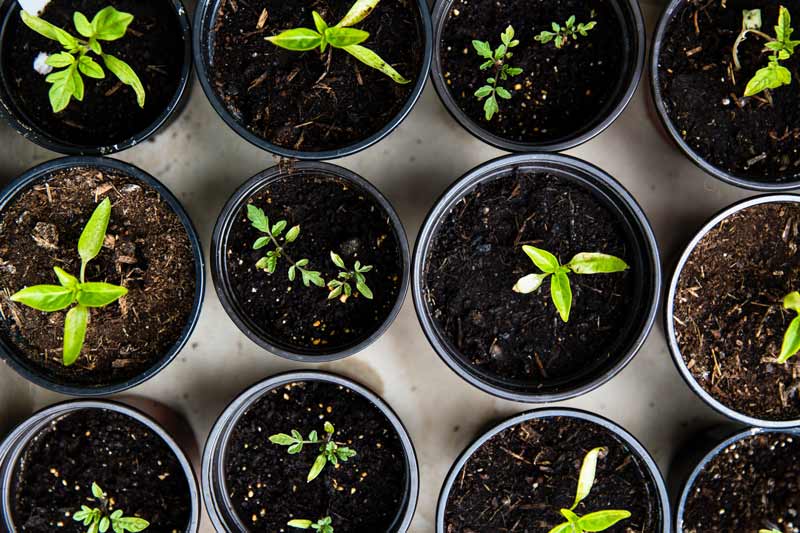FDIC-Insured - Backed by the full faith and credit of the U.S. Government
-
-
-
FNBO
Mortgage
Date Published: April 01, 2019
-

Wait! Don’t Throw That Away
How homeowners can help save the earth by saving trash
Maybe your neighbor does it. Perhaps you’ve watched a demonstration at a local Earth Day event. Or possibly your child came home from school one day and said, “Mom, Dad, give me all of our garbage, I’m making a compost pile in the backyard.”
Those words: compost, pile. They don’t sit well with a lot of people. That’s because the word “compost” conjures up visions of steaming rotten garbage and ... other stuff ... in a pile.
But it’s really an unfair stigma to place on compost. Especially as the perception of compost is being reshaped. Using it for our own backyards is now a very positive thing to consider for homeowners. In other words, compost is cool now.
Compost energizes your yard’s soil and can help garden vegetables fight diseases and may improve their flavor and nutrition. Compost also helps the soil retain moisture. Through composting, you enhance your garden’s ability to grow healthy plants. There’s a reason compost is called gardener’s black gold.
As we celebrate Earth Day and the arrival of spring, it’s a perfect time for compost to be celebrated, lifted up and embraced.
Ok, so what exactly is compost?
Essentially, compost is decomposed organic material that is produced when bacteria in soil breaks down garbage and biodegradable trash, which results in a material that looks like dark, moist dirt and is rich in minerals, making it ideal for gardening, landscaping and potting plants.
That means save those egg shells, cucumber ends, potato and carrot peelings, avocado pits – any vegetable or fruit scrap. And hang onto those coffee grounds (and filters), tea leaves, nut shells, stale bread, leftover cereal (and their cardboard boxes), uneaten pasta, pizza crusts, cardboard egg cartons (cut them up first), old jelly, etc.
In the non-food category, you can compost hair from your hair brush, plant trimmings, old toothpicks and bamboo skewers, toilet paper rolls, cotton balls, dryer lint, old cotton clothing (cut into small pieces), shredded paper, pencil shavings, sticky notes, junk mail (how fun!), leaves, newspaper, grass clippings and more.
Of course, there are some things you don’t want to compost, mostly animal products like meat, fish, butter, yogurt, milk, cheese, animal fat, etc. Meat and fish – and their smells – attract pests.
Also, it’s best not to put dog or cat waste in your compost. Their waste can contain microorganisms and parasites that you don’t want to introduce to the crops you will be eating if you’ll be using your compost for a garden. But you can use their fur from brushes and their old dry food.
The bottom line is that in addition to compost’s benefit to your home’s soil, by collecting materials for compost you are potentially removing up to 50 percent of your home’s waste. That’s 50 percent less garbage that you’ll be sending to the local landfill, whose decomposing waste produces methane, a greenhouse gas that traps about 28 times more heat than carbon dioxide.
Compost is sounding better and better, right?
How to start composting
Get yourself a nifty compost bin. You can make a square one out of old wooden pallets. Or buy a compost tumbler or a worm compost bin.
Start adding all those ingredients (that would otherwise be trash) you collected from your home. Composting experts say a nice mix of all those types of things listed above – food scraps with non-food items – makes for an ideal compost.
Turn and mix your compost weekly to aerate it, which will in turn help all your ingredients decompose faster. (Here’s your chance to use that pitchfork you bought as a Halloween prop years ago.) If it gets too dry, hose it down. If it gets too wet, mix it more often.
How to use your compost
Be patient. It takes on average about three months (sunshine helps) for the compost to become a rich, dark color.
Once you get a nice pile ready, you can:
- Mix it with your mulch
- Use it in a garden
- Add it to house plant soil
- Utilize it in landscaping
Even if you don’t garden, any neighbors near you who do will gladly take your compost for their garden. They might even pay you for it. Hello, side gig!
Storing your compost
You can store your compost for the following spring or summer by placing it on the ground and covering it with a tarp. This will prevent excess moisture from rain and snow runoff, while also allowing for humidity to seep in.
You can also store it in the bin you made it in. But if you want to keep the composting process going, and you don’t want it on the ground in your backyard, you can also store it in reusable containers or inexpensive garbage cans. But remember, you want to use it as soon as possible, because the longer it’s stored, the more chance it has to start losing some of its rich nutrients.
In the end, composting is a wonderful way to celebrate Earth Day all year long.
The articles in this blog are for informational purposes only and not intended to provide specific advice or recommendations. When making decisions about your financial situation, consult a financial professional for advice. Articles are not regularly updated, and information may become outdated.
